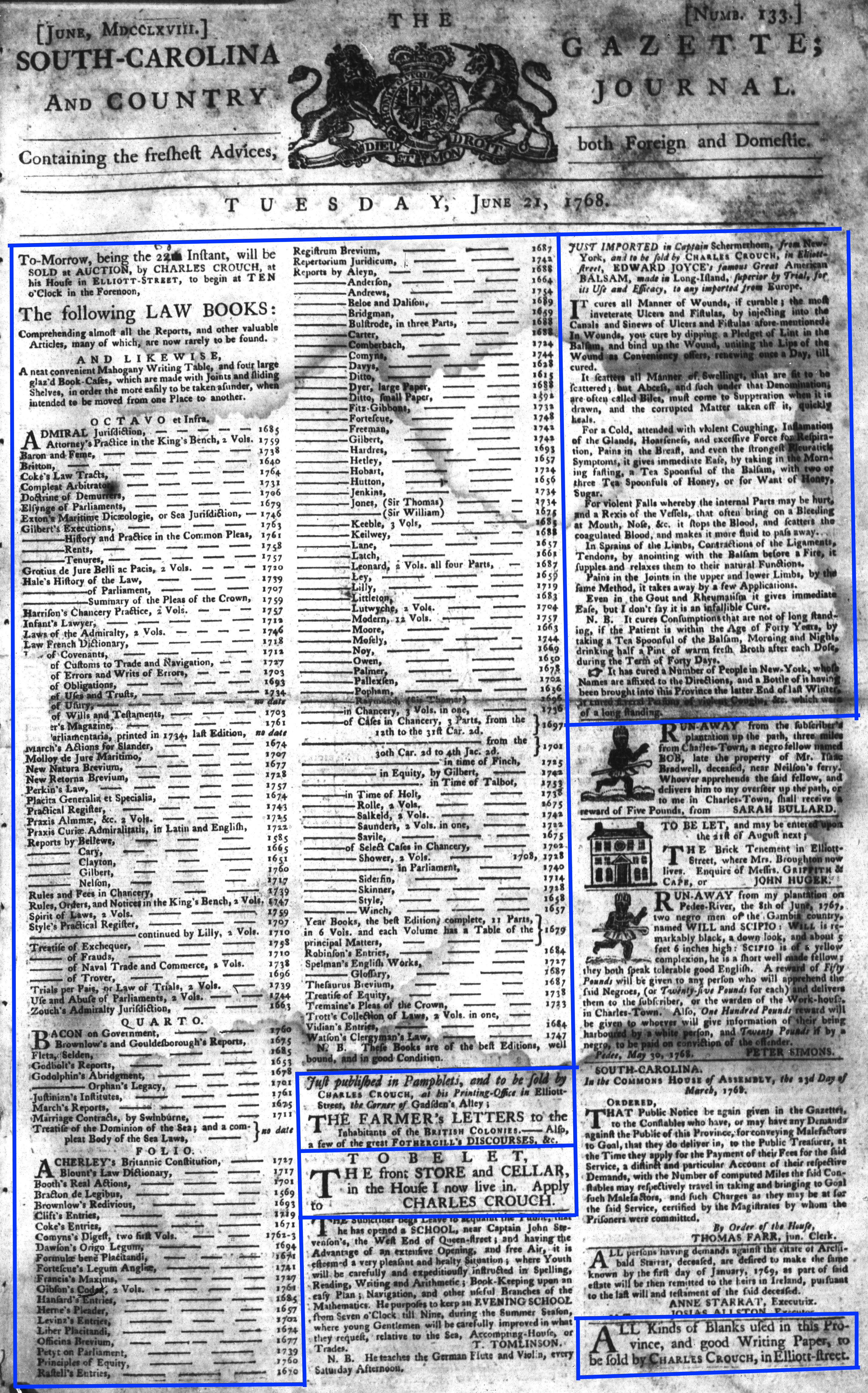What was advertised in a colonial American newspaper 250 years ago today?

“Many other Articles too tedious to mention.”
In a brief notice in the August 29, 1768, edition of the New-York Gazette and Weekly Mercury, William Moor advertised “a great Number of School Books” as well as “A large Assortment of Bibles, Testaments, Psalm Books, Psalters and Primers, with a great Variety of other Books on Law, Physick, and Divinity.” In addition, he stocked “a large Assortment of Saddles, Carpets, and many other Articles too tedious to mention.”
That Moor designated some of his merchandise “too tedious to mention” rather than publishing an extensive list of goods (an alternate strategy adopted by several other retailers whose advertisements appeared on the same page) had the unintended effect of influencing the placement of his advertisement in that issue. Moor’s entire notice extended only eight lines, making it short enough that the compositor could divide it into columns of four lines each, both printed perpendicular to the rest of the content on the page.
Compositors sometimes deployed this strategy as a means of squeezing more items, especially paid advertisements, into current issues rather then delay publication until the following week. Even though a two-page supplement devoted entirely to advertising accompanied this particular issue, it did not offer space to insert all of the advertising. Not so much remained to justify adding an additional page to the supplement. Instead, the compositor looked to the margins.
The standard issue consisted of four pages, each with three columns. The compositor converted the outer margin, away from the fold, of the first, third, and fourth pages into advertising space by dividing short notices into multiple columns of no more than four lines each and then positioning them perpendicular to the columns that ran the length of the page. In addition to Moor’s advertisement on the fourth page, a sixteen-line advertisement for a runaway servant appeared on the first page, divided into four columns of four lines each and positioned along the outer margin to the right of the masthead and essay that comprised the rest of the page. A bankruptcy notice, eight lines divided into four columns, ran in the outer margin of the third page. A short estate notice divided into two columns ran alongside Moor’s advertisement on the fourth page.
Moor likely had no choice concerning the unusual placement of his advertisement in the New-York Gazette and Weekly Mercury. All the same, the compositor’s efforts to find more space for paid notices may have served Moor’s interests by producing the unconventional format since readers may have been especially curious to see what sorts of items had been consigned to the margins. Rather than becoming marginal, the advertisements in the margins may have evoked additional notice.


